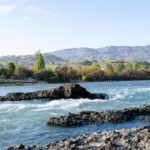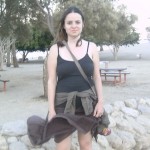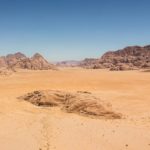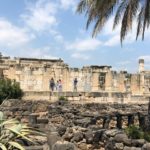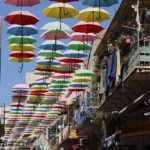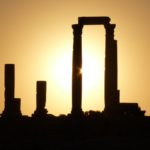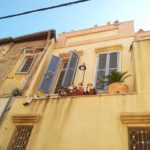Exploring the Other Side: My Visit to Hebron
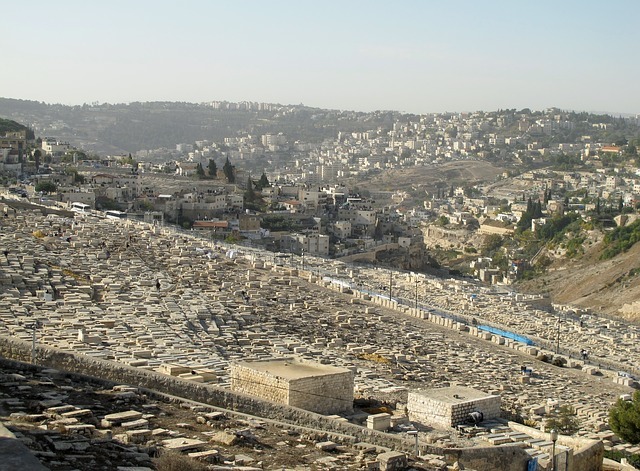
When I told my Israeli friends I was traveling to Hebron, I received two responses:
“Why?!”
“Don’t die.”
I live on a kibbutz, where people are happy to stay within their boundaries. The kibbutz is comfortable and homogenous, but I moved to Israel to see things and learn about new people. Instead, for the past year I have stayed on the kibbutz in my comfort zone.
I was bored.
I wanted to see the “other side” of Israel – one of the many “other sides” of Israel. In fact, I had been warned that Arabs were dangerous. And, well, there’s reason for fear. This past fall, after Operation Protective Edge, tensions rose and so did terror attacks. Some fanatical Palestinians carried out one-off terror attacks across the country. In Jerusalem, two men slaughtered worshipers in a synagogue with butcher knives. Cars were driven into bus stops full of morning commuters. An IDF soldier was stabbed at a train station.
People were scared.
While I’d heard scary stuff from Israelis, the city was open for tourism. Foreigners are welcome on both sides, and I read many great reviews of tours held in the city.
Even so, it seemed to me that the “dangerous Arab” couldn’t be the only narrative. Hebron, a large, mostly-Arab city in the West Bank, seemed a good candidate for exploration of the “other side.” While I’d heard scary stuff from Israelis, the city was open for tourism. Foreigners are welcome on both sides, and I read many great reviews of tours held in the city. Because the Israeli narrative held so much baggage, I trusted the foreign narrative more.
The issue is, Hebron is a divided city. Israelis aren’t allowed on the Palestinian side (H-1), and Palestinians must show approved ID to enter the Israeli side (H-2).
I’m sort-of an Israeli. I am a resident of Israel, but a citizen of the U.S. My American passport bears two pages of Israeli visas. Also, I speak Hebrew. I wasn’t sure if I’d be allowed in. But I figured I would try.
After walking down the silent Al-Shuhada Street, I briefly visited the Cave of the Patriarchs. It is believed to be the resting place of the biblical patriarchs and matriarchs. It, too, is divided. A synagogue on one side, a mosque on the other.
To get to Hebron from Jerusalem, I took the 160 bus. A normal city bus, but the blurry windows spoke of bullet-proof glass. We arrived right in the middle of Al-Shuhada Street, where the city was divided following the Hebron Agreement of 1997. Al-Shuhada Street had been a major Palestinian artery, housing around 600 shops. When it was closed to create a buffer zone between H-1 and H-2, all these shops were closed. It was eerie to see it, abandoned for 18 years. Israeli towns are usually bustling, except for on Shabbat.
This wasn’t Shabbat.
It was silent. Broken windows and peeling blue-green painted buildings stared down at me.
Welcome to Hebron.
After walking down the silent Al-Shuhada Street, I briefly visited the Cave of the Patriarchs, believed to be the resting place of the biblical patriarchs and matriarchs. It, too, is divided. A synagogue on one side, a mosque on the other. The synagogue was full of men praying (a small side room is available for women), and a very bored Israeli soldier guarded the dividing wall between the two houses of worship.
The mosque was especially beautiful. A man handed out little-red-riding-hood style capes to the women entering, to respectfully cover our bodies. I looked a bit ridiculous, in a pointy-capped cape, but at least afterwards I could stare at my leisure at the elegantly painted walls.
Surprisingly, the IDF soldier didn’t even check my passport. He buzzed the gate open, and I crossed into the broad, sunny road. That was it. I was where I wasn’t “supposed” to be.
Afterwards, I headed to the checkpoint to cross from H-2 (the Israeli side) to H-1 (the Palestinian side). I expected more difficulty at the checkpoint, which consisted of a gate manned by a soldier in a booth with bulletproof-glass windows. I tried to act very American and I spoke only English. Surprisingly, the IDF soldier didn’t even check my passport. He buzzed the gate open, and I crossed into the broad, sunny road. That was it.
I was where I wasn’t “supposed” to be.
While I wandered, I met a young man, Ahmed, who offered to help me find my destination. Though I initially didn’t want a guide, I accepted due to his expertise of the area. Not only was he able to point me toward the best Hebronian merchandise, but he introduced me to many vendors, with whom I had some great conversations. Plus, with Ahmed by my side, I avoided street harassment.
Even so, I was wary of Ahmed – I can’t help it, being a single woman. But after being careful not to be led into dead-end alleys, and asking Ahmed all about his family and occupation, I trusted him enough to enjoy my day.
We drank tea and sweet Indian date juice, and ate paprika-dusted potato chips on a stick. Girls returning from school held their books at their sides and chatted with their friends. Pedestrians wandered in and out of traffic as cabs honked for fares.
The Hebron I saw was friendly, peaceful – a normal city full of people going about their daily business.
Ahmed was eager to show me that his Hebron was lively and non-threatening. We wandered, and along the way I did a bit of shopping: At Hebron’s qafiyah (scarf) factory, I bought scarves for 6 dollars apiece (any cheaper scarf is Chinese, not Hebronian); at a candy shop, half a pound of candy for just a dollar. Also, any of the food or drink sold in carts on the street-curb costs just a dollar or so. We also visited his football club, where men sat around playing poker, drinking sweet Arabic coffee, and smoking shisha (water-pipe).
We chatted for hours, Ahmed acting as my translator.
“They want you to know they like American singers,” Ahmed said at one point.
“Which singers?” I asked.
“Justin Bieber is good. Also Katy Perry!” He responded.
I laughed, “And who’s the best Palestinian singer?”
Ahmed translates for the men, who reply in unison: “Mohammad Assaf!”
Assaf is a Palestinian from Gaza who won Arab Idol (a very popular Middle-Eastern spinoff of American Idol) a few years back. Assaf is a point of pride in the Palestinian community, which is stuck in a struggle for legitimacy. In the face of condescension and pity, many Palestinians want to show outsiders that they, too, have great things to offer the world.
Exploring the Other Side: My Visit to Hebron.
I also learned that many of the men had family in prison for throwing rocks at Israeli soldiers. The tone of the men’s voices, even though I didn’t understand their words, told me that there’s a deep distrust, even hatred, for Israelis in Hebron. They’re seen as land-thieves and occupiers.
Jewish incursion is obvious around Hebron: street graffiti proclaiming “Open Shuhada,” or the Israeli flag flying over a Jewish settlement near the H-1, H-2 border. And travel is restricted- Ahmed told me he could apply to exit the Palestinian Territories once every six months. The visa costs a few hundred dollars, lasts for a month, and forbids the holder to work.
Though these men wanted justice, wanted their city open again, they were clearly sick of conflict. I felt humbled, and extremely lucky, to be able to cross between Israel to the Palestinian territories, a privilege denied to both Israelis and Palestinians. It was refreshing to cut through all the nonsense and meet citizens of Hebron first-hand. I encourage anyone traveling to make a point of conversing with locals.
They’re better guides to the region than any published guidebook. There’s also the simple joy of connecting with someone so apparently different. Those who warned me of the dangers of Hebron were justified in their caution, as there are occasionally clashes between the Israeli soldiers and Palestinians.
But the Hebron I saw was friendly, peaceful – a normal city full of people going about their daily business. And I’m glad I didn’t allow Hebron’s reputation to prevent me from seeing the vibrancy of a great city.
Here are a few quick tips for women traveling in conservative and/or Muslim areas:
- Travel with a man for optimum comfort. You’ll avoid street harassment.
- Dress conservatively: high necklines, sleeves to your elbows, and legs covered entirely (though sandals are usually okay). You don’t have to wear a headscarf, as the scarf is a religious symbol rather than a simple article of modesty.
- Wear dark sunglasses to avoid eye contact.
- Don’t touch men (not even handshakes).
- If you’re Jewish, don’t say you are.
- Don’t answer inappropriate relationship questions.
- Say you’re married, even wear a fake wedding ring.
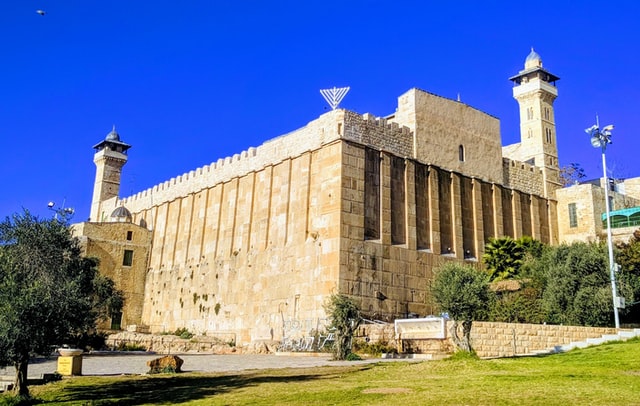
Exploring the Other Side: My Visit to Hebron Related Reading
Life in Palestine: Choosing to Live on the “Other Side”
Have you traveled to Hebron? How was your trip? Email us at [email protected] for information about sharing your experience and advice with the Pink Pangea community. We can’t wait to hear from you.
Exploring the Other Side: My Visit to Hebron top photo credit by Pixabay (top) and Unsplash.


